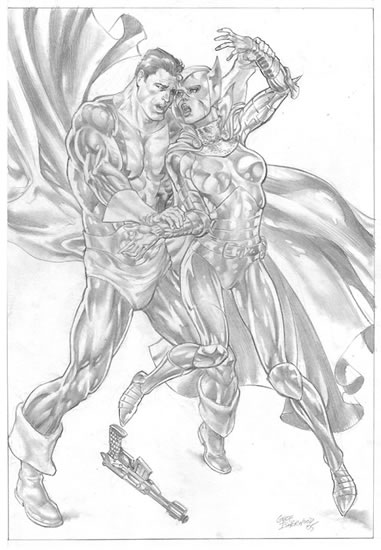Bring the T.H.U.N.D.E.R.
Myself, I think it's global warming.
Every area of human endeavor has what I like to call its "linchpin lore" — that arcane yet essential information that escapes casual notice, but is treasured primarily by the genuine aficionado. Linchpin lore provides the means of separating the true experts in a field from the mere pretenders. You may know many of the general facts that have crept into the common vernacular, but until you master the linchpin lore, you can't call yourself an insider.
When it comes to Silver Age comics — that age being defined as the period beginning with the publication of Showcase #4 (the first appearance of the modern Flash) in 1956, and continuing until Jack Kirby (the artist-creator of Captain America, the Fantastic Four, the Hulk, and the original X-Men) left Marvel Comics in 1970 — T.H.U.N.D.E.R. Agents constitutes linchpin lore.

Published by Tower Comics from 1965 to 1969, T.H.U.N.D.E.R. Agents related the thrilling adventures of a group of superpowered individuals employed by the United Nations. (T.H.U.N.D.E.R. was an acronym for The Higher United Nations Defense Enforcement Reserves. Usually, one doesn't include the initial article in an acronym, but I doubt that H.U.N.D.E.R. Agents would have sold.) The series was the brainchild of, and a showcase for, legendary comics artist Wally Wood, who came to prominence as part of the EC Comics stable in the 1950s.
The primary Agents were Dynamo, whose Thunder Belt gave him superhuman strength and invulnerability, but only for short periods of time; NoMan, who housed his mental essence in an endless series of identical android bodies; Menthor, whose high-tech helmet enabled him to read others' thoughts and move objects with his mind; Raven, who — no surprise — could fly, using a rocket-powered backpack; and Lightning, whose superspeed costume shortened his lifespan every time he used it.
Although the T.H.U.N.D.E.R. Agents faced a number of evil nemeses, their most memorable foe was the Iron Maiden, a brilliant criminal with an inexplicable jones for Dynamo. I say "inexplicable" because Dynamo (real name: Leonard Brown, also the name of one of the series' writers), despite his chiseled good looks and the great strength that consumed him when he switched on his Thunder Belt, was always portrayed as something of a dimwit. Iron Maiden (whose true identity was never revealed, though we discovered on one occasion that she had red hair underneath her clunky helmet) could have done better.
Geof Isherwood captures Dynamo and the Iron Maiden in an intense moment. A sterling example of Geof's phenomenal mastery of human anatomy — every muscle in both figures is accurately defined — this piece also exhibits the artist's skill at tonal rendering.

Members of the T.H.U.N.D.E.R. Agents cast appear more than once in my Common Elements gallery. Darryl Banks, best known for his lengthy run on Green Lantern, brings together Dynamo and Nick Fury, Agent of S.H.I.E.L.D. (Man, those acronyms were everywhere back in the Silver Age!)

Among the supporting players in T.H.U.N.D.E.R. Agents was a group of non-powered yet resourceful operatives called the T.H.U.N.D.E.R. Squad. The safari jacket-clad Squad provided technical and tactical backup for their superpowered comrades. (And, in one instance, got promoted to the A-Team — T.H.U.N.D.E.R. Squad leader Guy Gilbert became T.H.U.N.D.E.R. Agent Lightning early in the series' run.) Here, the T.H.U.N.D.E.R. Squad's resident hottie, Kathryn "Kitten" Kane, joins T'Challa, the Black Panther, for a posedown, courtesy of artist James E. Lyle.

And that's your Comic Art Friday. Watch out for groundhogs.
Labels: Comic Art Friday









0 insisted on sticking two cents in:
Post a Comment
<< Home